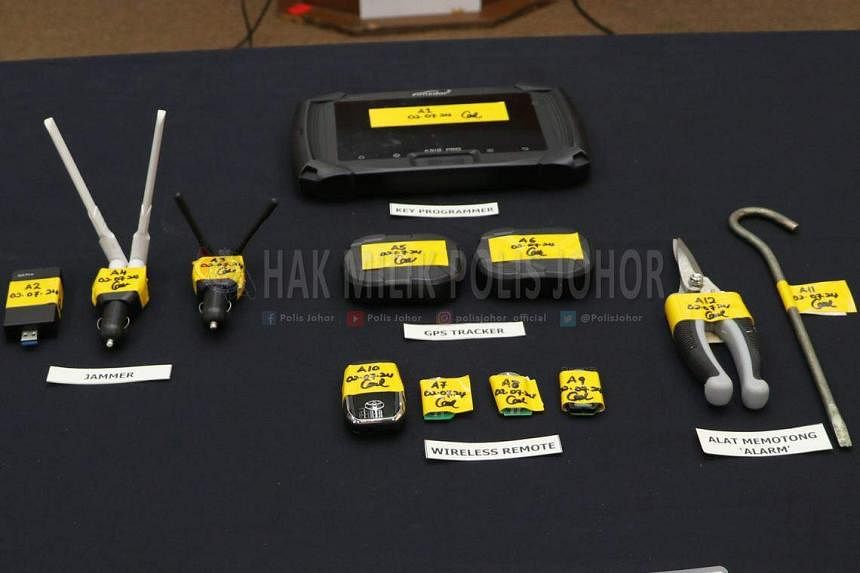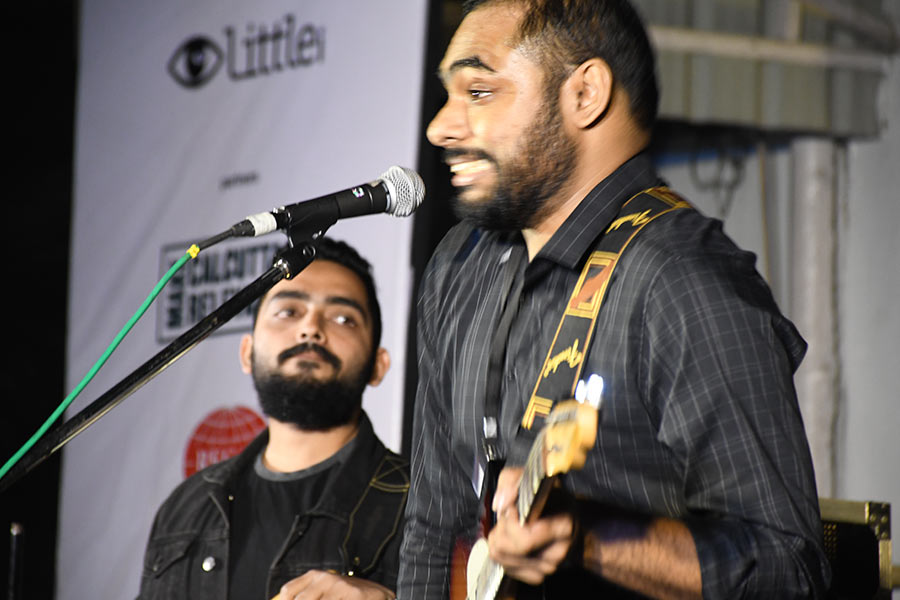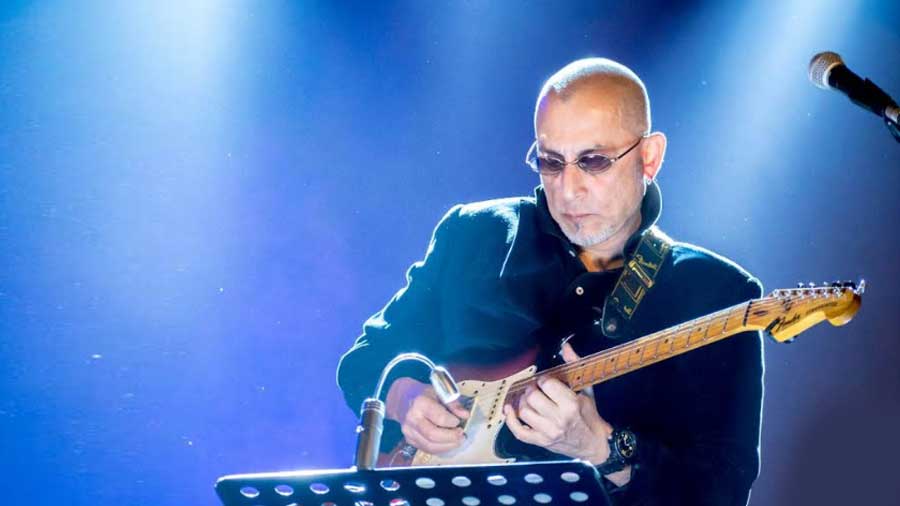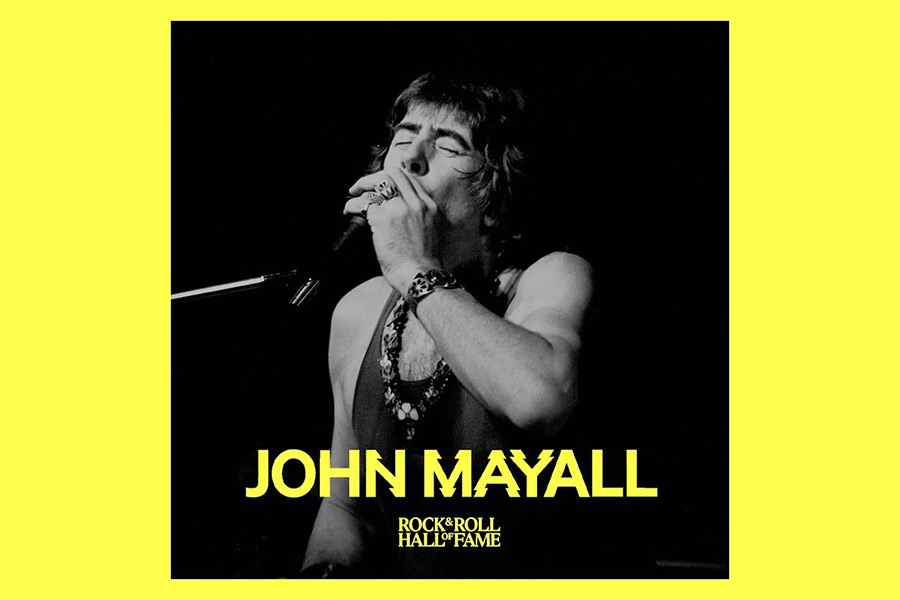BuzzFeed
Thu, 25 July 2024
Well, let's start off by stating the obvious: The last week/month/year has been wild.
Kamala Harris has spent the past week campaigning as the presumptive Democratic presidential nominee.

Montinique Monroe / Getty Images
Donald Trump has also been on the campaign trail.
WXII/ Twitter: @DaVonteMcKenith
He caught up on President Biden's speech on his plane last night.
Twitter: @margommartin
This morning, he called into Fox News.
Fox/ Twitter: @atrupar
Kamala released a press release about Trump's Fox News interview, and it's going viral:
Twitter: @alex_abads
In it, she calls Trump "old and quite weird?"
Twitter: @Nagler
People can't believe it's real.
Twitter: @JoyceWhiteVance
"Something about the question mark after 'old and quite weird' is taking me out," this person said.
Twitter: @charlotteirene8
"This campaign is gonna be fun again," another person commented.
Twitter: @ElieNYC
It will surely be a long four months, but I'm enjoying this messiness.
the bullet point of "Trump is old and quite weird?" is killing me https://t.co/HaKW3McSRS
— edie olmsted (@edieocre) July 25, 2024
Twitter: @edieocre
Let's see what happens next!
Dylan Stableford
·Senior Writer
Thu, 25 July 2024
Scroll back up to restore default view.
Donald Trump said Thursday that he expected Vice President Kamala Harris would eventually become the Democratic nominee after President Biden’s halting performance in last month’s debate.
"I knew there was a palace coup going on, and I assumed that she'd be probably getting it," Trump said in a phone interview on "Fox & Friends." "She had the advantage."
This was the Harris campaign’s rapid response
Following the interview, the Harris campaign sent out a statement on what it called “a 78-year-old criminal’s Fox News appearance.”
“After watching Fox News this morning we only have one question, is Donald Trump OK?” the statement said before listing its takeaways. Among them: “Trump is old and quite weird” and “This guy shouldn’t be president ever again.”
Trump is workshopping his nicknames
Trump at a rally in Charlotte, N.C., on Wednesday. (Marco Bello/Reuters)
At a rally last Saturday, a day before Biden announced his decision to drop out of the race and endorse Harris, Trump riffed on Harris’s laugh.
“I call her 'Laughing Kamala,'" Trump said. "You ever watch her laugh? She's crazy. You can tell a lot by a laugh. No, she's crazy. She's nuts."
In the days since, Trump has trotted out other various disparaging nicknames for her — “Lyin’” and “Crooked,” to name two — and tried painting her as an “ultra-liberal.”
“Kamala Harris has been the ultra-liberal driving force behind every single Biden catastrophe,” he said at a rally in Charlotte, N.C., on Wednesday. “So now we have a new victim to defeat: Lyin’ Kamala Harris.”
But Trump — whose use of nicknames for his political opponents is well documented — has yet to land on a consistent one for Harris, who on Monday said she had secured enough delegate support to be the presumptive Democratic presidential nominee.
In a fundraising email sent this week by the Trump campaign, the former president referred to Harris as “COMMIE-LA” and falsely claimed the vice president is “serving as the FAKE Commander-in-Chief.”
Then there’s the debate over the debate
Harris at a campaign event in Indianapolis on Wednesday. (Jon Cherry/Reuters)
In a separate email blast, Sen. JD Vance, the Republican vice presidential nominee, insisted he is “furious” that he won’t get to debate Harris, who he called the “WORST Vice President in this country’s history.”
“Instead, I’ll go up against whomever the Democrat elitists anoint in their smoke-filled back room,” Vance said. “But no matter which far-left radical they trot out to take me on … I will WIPE THE FLOOR with them.”
On Truth Social earlier this week, Trump said he is willing to debate Harris, but suggested the event be hosted by Fox News instead of ABC.
“ABC Fake News is such a joke, among the absolute WORST in the business,” Trump wrote in a post that was filled with disparaging nicknames. “They try to make Crooked Joe into a brave warrior because he didn’t have the ‘guts’ to fight it out — He quit! They then tried to make ‘Sleepy’ look like a great President - he was the WORST, and Lyin’ Kamala into a competent person, which she is not. ABC, the home of George Slopadopolus, is not worthy of holding a Debate, of which I hope there will be many! MAGA2024.
Daniel Dale, CNN
Thu, 25 July 2024

Former President Donald Trump made at least 10 false claims about Vice President Kamala Harris in his first campaign rally since she became the presumptive Democratic presidential nominee.
Trump, speaking in North Carolina, attacked Harris at length with a flurry of assertions about her personal and political past, her record as vice president and her policy stances. We’re still looking into some of his claims, but at least 10 were wrong.
Here is a fact check.
Harris and the retirement age
Discussing Social Security, Trump claimed of President Joe Biden and Harris: “They’re talking about, he was talking, she’s talking about – lifting the retirement age.”
Facts First: This claim is false about Harris. She has not spoken in favor of raising the age for receiving Social Security retirement benefits. (Biden did, as a US senator in the 2000s and prior, express support for or openness to raising the retirement age, but he has been a vocal opponent of the idea as president.)
Harris has supported increasing, not reducing, Social Security benefits. In 2019, about two years before she became vice president, she co-sponsored a bill from Sen. Bernie Sanders of Vermont, called the Social Security Expansion Act, that would boost Social Security benefits by raising payroll taxes on high earners.
Harris and abortion
Trump said, “She wants abortions in the eighth and ninth month of pregnancy, that’s fine with her, right up until birth, and even after birth – the execution of a baby.”
Facts First: Trump’s claim that Harris supports the execution of babies after birth is false. She has never said anything to endorse post-birth murder, which is illegal everywhere in the country; Trump has frequently claimed that some Democratic states allow such post-birth executions, but that claim is false, too.
Harris, a vocal supporter of abortion rights, has declined to endorse specific limits on how late in a pregnancy an abortion should be permitted to occur. According to data published by the US Centers for Disease Control and Prevention, just 0.9% of reported abortions in 2020 occurred at 21 weeks gestation or later. Many of these abortions occur because of serious health risks or lethal fetal anomalies.
Harris has called for legislation restoring the protections of the Roe v. Wade decision that was overturned by the Supreme Court in 2022; Roe allowed states to restrict abortion after the point of fetal viability, often considered to be around 23 to 24 weeks gestation, with exceptions for abortions necessary to protect the patient’s life or health. As a senator and vice president, Harris has supported a bill that would, like Roe, ensure abortion was available at least until fetal viability – and would also prohibit various state policies that make the process of providing or obtaining an abortion more onerous.
Asked about Trump’s comments, the Trump campaign provided various examples of Harris taking liberal positions on abortion policy and declining to endorse specific limits - but nothing to substantiate the claim that she supports “the execution of a baby” after birth.
Harris and red meat
Trump claimed, “Kamala even wants to pass laws to outlaw red meat to stop climate change.”
Facts First: This is false. Harris has never expressed support for passing laws to outlaw red meat. At a CNN climate change town hall in 2019, when she was running in the Democratic presidential primary, she expressed support for changing dietary guidelines to try to encourage Americans to reduce their consumption of red meat, but she also said “I love cheeseburgers from time to time” and that she favored using “incentives” and education to encourage healthy eating.
After mentioning sodas and foods with copious sugar, Harris said in this same town hall answer that “the balance that we have to strike here, frankly, is about what government can and should do around creating incentives and then banning certain behaviors.” The phrase “banning certain behaviors” opened the door to claims that she wants to ban red meat. But she immediately proceeded to her comments about how she enjoys cheeseburgers and favors incentives to prod changes in behavior – making clear in context that she was expressing support for incentives rather than bans.
Asked about Trump’s claim about Harris wanting to outlaw red meat, the Trump campaign provided two citations that did not substantiate it: a YouTube video of Harris’ comments that was correctly titled “Kamala Harris Wants The Government To Create ‘Incentives’ For Americans to Eat Less Meat” and an article headlined, “Flashback: Kamala Harris said she would support eating less meat if elected president.”
Harris and Trump’s legal cases
Trump has claimed for months that Biden secretly orchestrated his criminal and civil legal cases. This time, he directed the claim at Harris. He said, “But it was all headed up by her. Because she’s a prosecutor.”
Facts First: This is false. There is simply no basis for claiming that Harris “headed up” the legal cases against him. Trump has never presented any evidence for this claim that Biden was the hidden hand behind his cases, let alone for suddenly switching the claim to make it about the vice president after months of saying it about the president.
There is no sign that Harris had any role in bringing charges against Trump in Manhattan, New York (where he was convicted of 34 felony counts of falsifying business records) or Fulton County, Georgia (where an election subversion case against Trump is on hold); those prosecutions have been led by elected local district attorneys. Trump’s two federal cases, one dismissed by a judge earlier this month, were brought by a special counsel, Jack Smith. Smith was appointed by Attorney General Merrick Garland, a Biden appointee, but that is not proof that Biden orchestrated the prosecutions – and certainly not proof that Harris did.
Harris’ immigration role
Trump claimed of Harris: “She was the border czar, but she never went to the border.”
Facts First: Trump made two false claims here. First, Harris did go to the border as vice president, in Texas in mid-2021; many Republicans had criticized Harris prior to the visit for not having gone, and some later argued that she didn’t go frequently enough, but the claim that she “never” went has not been true for more than three years. Second, Harris was never made Biden’s “border czar,” a label the White House has always emphasized is inaccurate. In reality, Biden gave Harris a more limited immigration-related assignment in 2021, asking her to lead diplomacy with El Salvador, Guatemala, and Honduras in an attempt to address the conditions that prompted their citizens to try to migrate to the United States.
Some Republicans have scoffed this week at assertions that Harris was never the “border czar,” noting on social media that news articles sometimes described Harris as such. But those articles were wrong. Various news outlets, including CNN, reported as early as the first half of 2021 that the White House emphasized that Harris had not been put in charge of border security as a whole, as “border czar” strongly suggests, and had instead been handed a diplomatic task related to Central American countries.
A White House “fact sheet” in July 2021 said: “On February 2, 2021, President Biden signed an Executive Order that called for the development of a Root Causes Strategy. Since March, Vice President Kamala Harris has been leading the Administration’s diplomatic efforts to address the root causes of migration from El Salvador, Guatemala, and Honduras.”
Biden’s own comments at a March 2021 event announcing the assignment were slightly more muddled, but he said he had asked Harris to lead “our diplomatic effort” to address factors causing migration in the three “Northern Triangle” countries (he also mentioned Mexico that day). Biden listed factors in these countries he thought had led to migration and said that “if you deal with the problems in-country, it benefits everyone.” And Harris’ comments that day were focused squarely on “root causes.”
Republicans can fairly say that even “root causes” work is a border-related task. But calling her “border czar” goes too far.
Harris and the number of migrants
Trump claimed that Harris “allowed 20 million illegal aliens to stampede into our country from all over the world.”
Facts First: Leaving aside Trump’s claim about Harris’ own responsibility for migration levels, the“20 million” figure is false, a major exaggeration. The total number of “encounters” at the northern and southern border from February 2021 through June 2024, at both legal ports of entry and in between those ports, was about 10 million – and an “encounter” does not mean a person was let into the country; some people encountered are promptly sent away.
Even if you added the estimated number of Biden-era “gotaways” (people who evaded the Border Patrol to enter illegally), which House Republicans said in May was nearly two million, “the totals would still be vastly smaller than 15, 16 or 18 million,” Michelle Mittelstadt, spokesperson for the Migration Policy Institute think tank, said in late June after Trump used those figures.
The “encounters” figures can’t be described as figures on people successfully entering the US. Some encounters involve people who are deemed inadmissible at legal ports and are refused permission to enter. Also, the same person can be “encountered” multiple times if they keep returning to the border to try again – which is what happened in many cases under Biden when the Title 42 rapid-expulsion authority invoked by Trump during the Covid-19 pandemic was in place into May 2023.
Harris and fentanyl deaths
Shortly after claiming there is a “Kamala Harris invasion” of the border, Trump said, “We’re losing 300,000 people a year through fentanyl that comes through our border.”
Facts First: Trump’s “300,000” claim is false. The number of US overdose deaths in 2023 involving synthetic opioids, including fentanyl, was approximately 75,000, according to estimated and provisional data published by the US Centers for Disease Control and Prevention. The CDC said in May that roughly 107,500 people in the US died from a drug overdose involving any kind of drug in 2023; even that larger number is nowhere close to Trump’s “300,000.”
When Trump made similar “300,000” claims earlier this year, Dr. Andrew Kolodny, medical director of the Opioid Policy Research Collaborative at Brandeis University, said “I have no idea where Trump is getting ‘300,000’ from and called it “a made-up number.”
While Kolodny said it’s likely that the number of US overdose deaths is undercounted, there is no apparent basis for Trump’s insistence that the real number is nearly triple the reported number. And Kolodny said the undercount issue is centered not on overdoses from illicit fentanyl smuggled across the southern border but on seniors’ overdoses from accidentally taking too much of their legal prescription medications.
It is also worth noting that fentanyl is largely smuggled by US citizens through legal ports of entry rather than by migrants sneaking into the country.
CNN’s Jen Christensen contributed to this item.
Harris and the Jewish community
Trump criticized Harris for not attending Israeli Prime Minister Benjamin Netanyahu’s Wednesday speech to Congress (though Trump’s running mate, Sen. JD Vance of Ohio, also did not attend); Harris, who is planning to hold a meeting with Netanyahu on Thursday, traveled to Indianapolis on Wednesday to give a previously scheduled speech to a historically Black sorority.
That’s fair game for criticism. But Trump said after criticizing Harris’ absence: “Even if you’re against Israel or you’re against the Jewish people, show up and listen to the concept. But she’s totally against the Jewish people.”
Facts First: Trump’s claim that Harris is “totally against the Jewish people” is nonsense. Harris has been married to a Jewish man, Doug Emhoff, for nearly 10 years – and she has repeatedly denounced antisemitism, expressed fondness for the Jewish community and its traditions, complimented Israel at length, and endorsed “America’s ironclad commitment to the security of Israel.” Though she has sometimes been pointedly critical of the actions of Israel’s government during the war in Gaza, drawing criticism from conservative Jews and others, there is no evidence she has a general antipathy toward “the Jewish people” as Trump claimed.
The Jewish Telegraphic Agency news service reported this week: “Over the course of her life and career, she has been surrounded by Jews, from her schoolmates to her colleagues to her closest family members. That background has given Harris, 59, an easy familiarity with Jewish spaces, say those who have interacted with her. She has also encouraged Emhoff to embrace his Jewish identity as the second gentleman; for the first time, mezuzahs have been installed at the vice presidential residence, and Emhoff has taken a leading role in the administration’s efforts to fight antisemitism.”
Harris and the bar exam
Trump claimed that Harris, a lawyer who was elected as San Francisco’s district attorney and then as California’s attorney general, “failed her law exams.” Then he continued, “You know that? She couldn’t pass her bar. She couldn’t pass her bar exams…Does anyone know that? … But she’s gonna be a great president, right? No, she couldn’t pass her bar exams. She couldn’t pass anything. Couldn’t pass everything. She couldn’t pass anything.”
Facts First: It’s not true that Harris “couldn’t pass anything.” She did fail on her first attempt to pass the bar exam, according to The New York Times, but then succeeded. She was admitted to the California bar in 1990, the year after she graduated from law school.
Trump could fairly say that Harris couldn’t initially pass the bar exam, but his rally comments made it sound like she never passed at all.
For more CNN news and newsletters create an account at CNN.com














